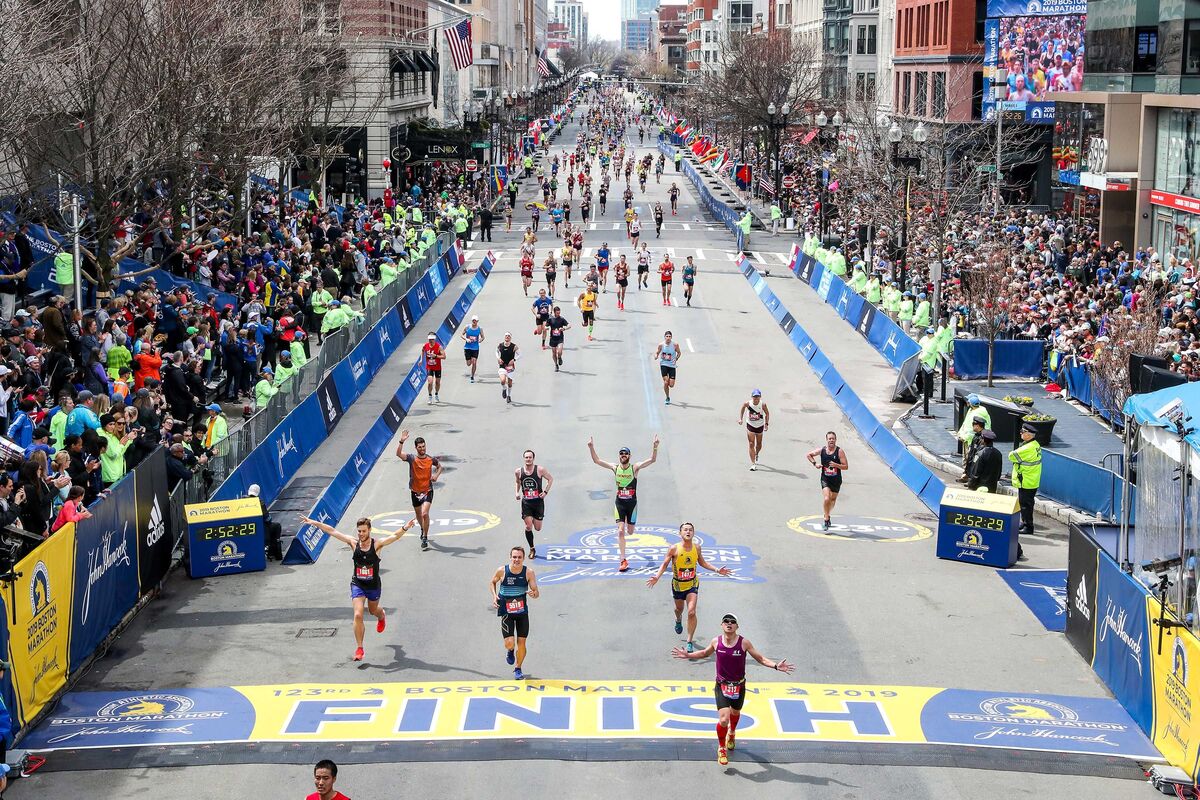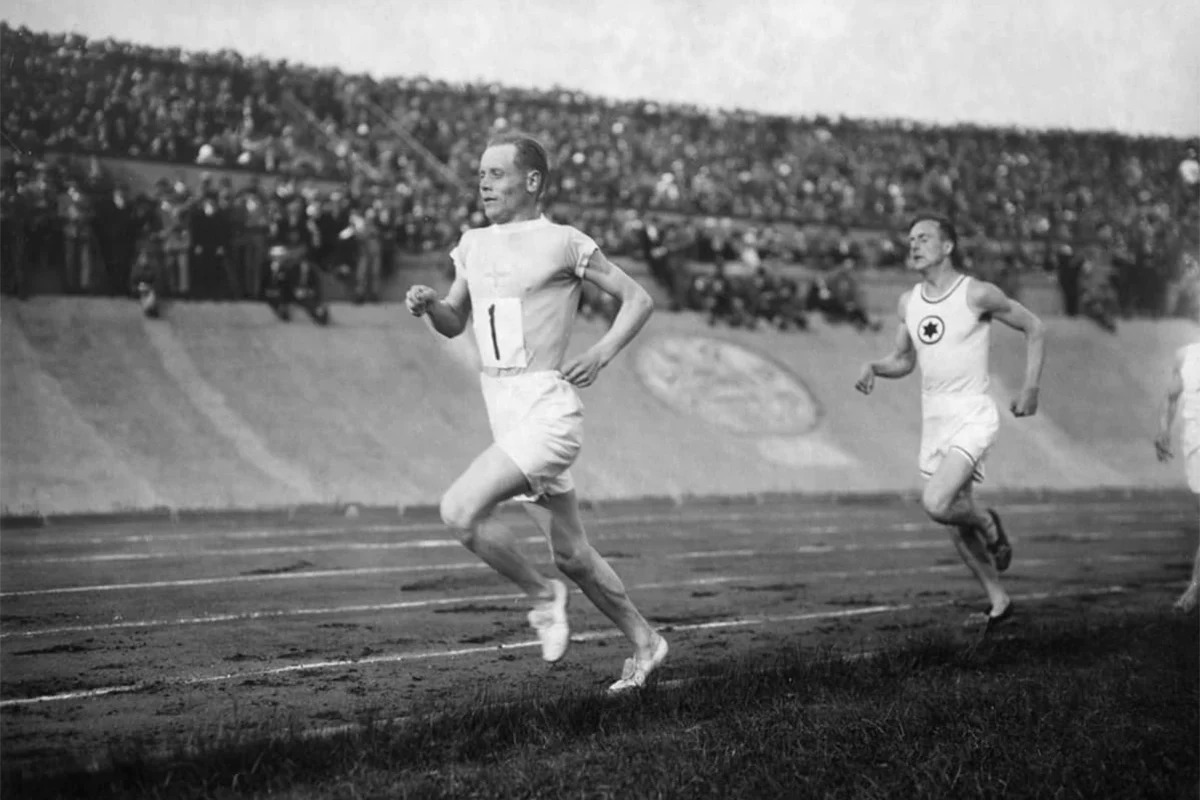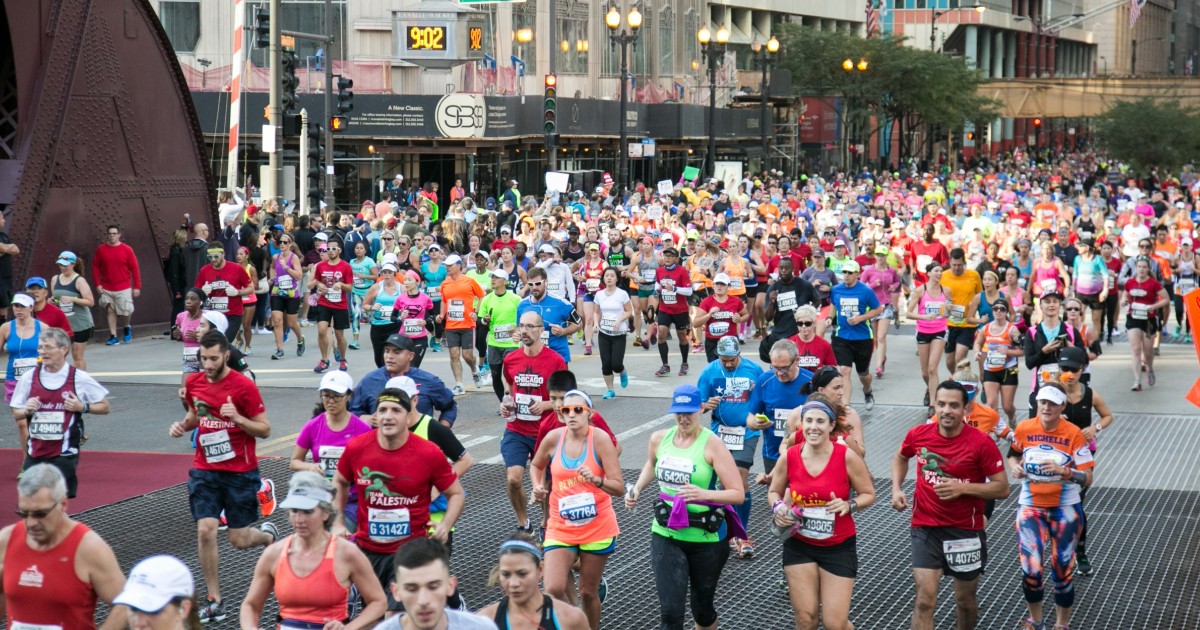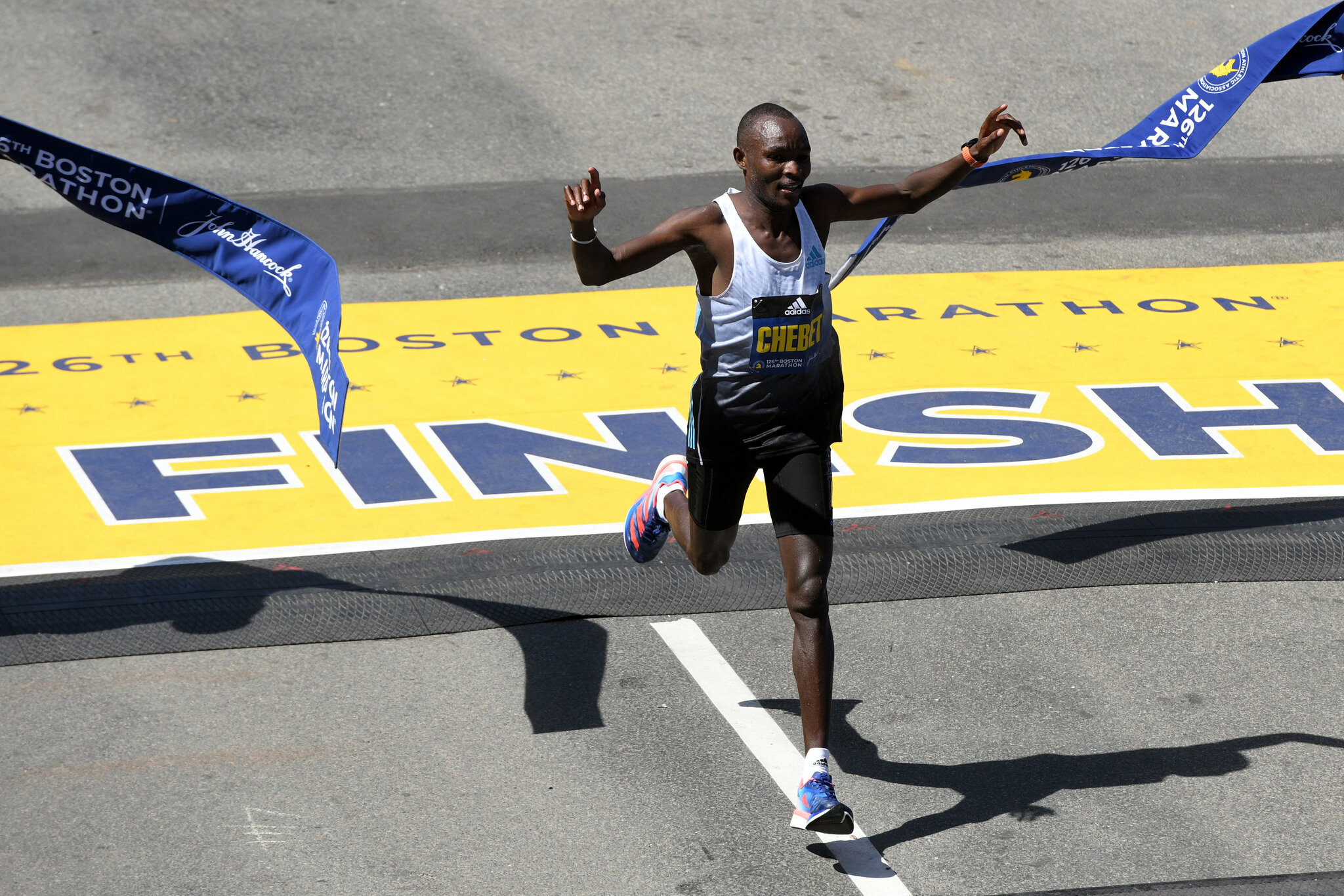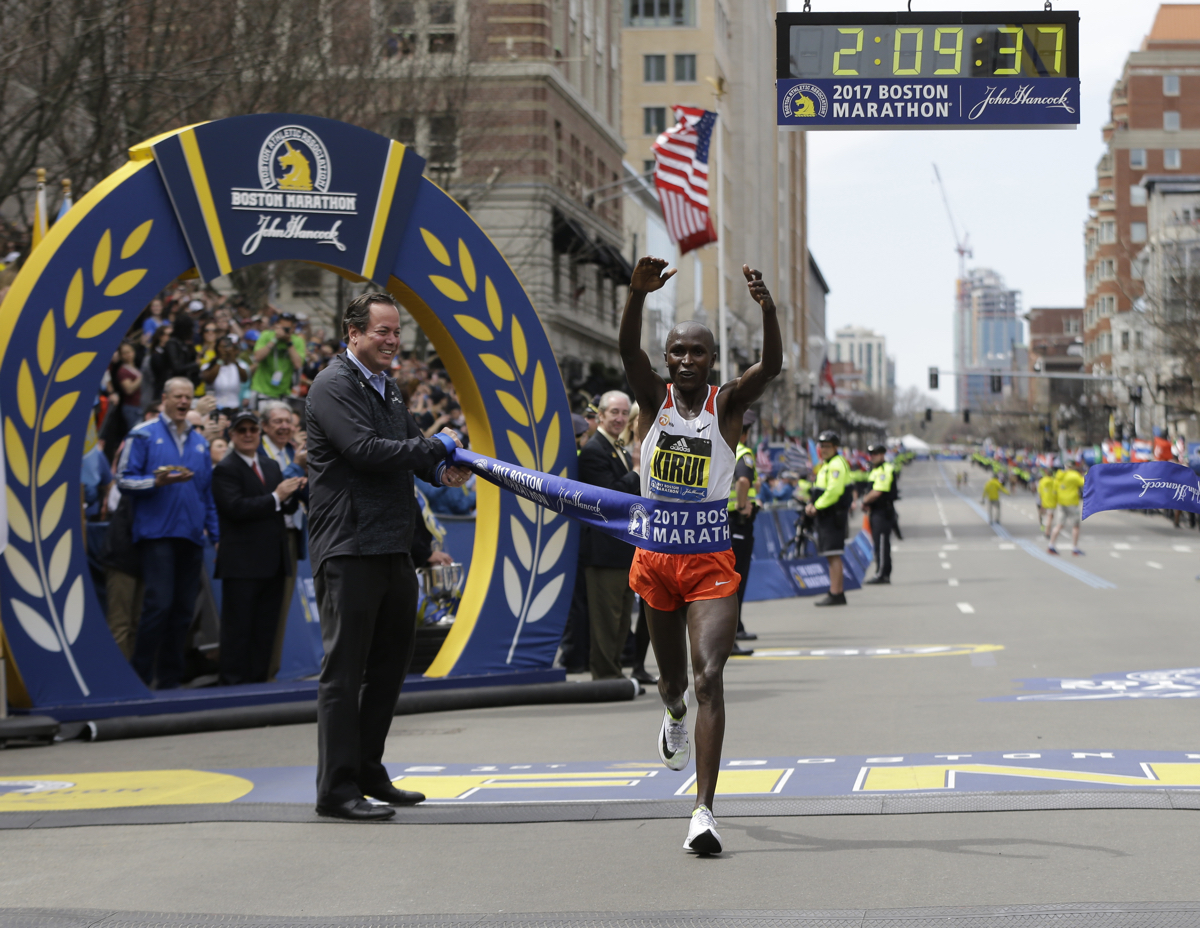Home>Misc>Featured>When Did They Add A Half Marathon In The Lincoln Marathon


Featured
When Did They Add A Half Marathon In The Lincoln Marathon
Published: August 29, 2023
Discover the history of the Lincoln Marathon and learn when they introduced the exciting addition of a half marathon. Join us for this featured event!
Introduction
The Lincoln Marathon, held in Lincoln, Nebraska, is a highly anticipated event for both runners and spectators. This annual race attracts participants from all over the country and offers a challenging course through the scenic streets of the city. For years, the Lincoln Marathon has been a full marathon event, but in recent years, a new addition has been made to the race – the half marathon.
The half marathon is a race distance of 13.1 miles, half the distance of a full marathon. This addition has brought a new level of excitement and participation to the Lincoln Marathon, attracting both experienced runners who want a shorter race option and beginners who are just starting their running journey.
In this article, we will delve into the history of the Lincoln Marathon, explore the reasons behind the decision to add a half marathon to the event, and examine the implementation and response to this new addition. By doing so, we hope to gain a deeper understanding of how the Lincoln Marathon has evolved and how the addition of the half marathon has impacted the event.
History of the Lincoln Marathon
The Lincoln Marathon has a rich history that dates back to its inaugural race in 1978. The event was originally organized by a small group of dedicated runners who wanted to provide a platform for avid runners in the Lincoln community to showcase their skills and challenge themselves. Over the years, the event has grown in popularity and has become a highlight on the local running calendar.
From its modest beginnings, the Lincoln Marathon has evolved into a highly regarded race that attracts runners from various regions, not just Nebraska. The race course winds through the charming neighborhoods and vibrant downtown area of Lincoln, offering participants a unique and visually appealing experience. The marathon route showcases the city’s beautiful landmarks, including the Nebraska State Capitol and the University of Nebraska-Lincoln campus, adding to the allure of the event.
Throughout its history, the Lincoln Marathon has been known for its well-organized race management and supportive community. The dedicated team of organizers, volunteers, and sponsors work tirelessly to ensure a smooth and enjoyable experience for all participants. The event has gained a reputation for its friendly atmosphere and the overwhelming support from spectators who line the streets to cheer on the runners.
The Lincoln Marathon has also seen its fair share of impressive performances and memorable moments. Over the years, many talented runners have set personal records and achieved remarkable feats of endurance on this challenging course. The event has become a platform for local, national, and even international athletes to showcase their running prowess and compete at a high level.
With its long-standing history and esteemed reputation, the Lincoln Marathon has become a beloved tradition in the running community. However, in recent years, race organizers saw an opportunity to expand the event and make it more inclusive by adding a new race distance – the half marathon. This decision would prove to be a significant turning point for the Lincoln Marathon, attracting a wider range of participants and sparking renewed excitement for the event.
The Addition of the Half Marathon
In response to the growing popularity of shorter race distances and the increasing demand for more options in the running community, the organizers of the Lincoln Marathon made the decision to add a half marathon to the event. This new addition would provide an alternative race distance for participants who may not be ready to tackle a full marathon but still wanted to be a part of the Lincoln Marathon experience.
The half marathon is a race distance of 13.1 miles, which is half the distance of a full marathon. This distance holds its own unique challenges and appeals to a wide range of runners, including those who may be newer to the sport or prefer a shorter, faster-paced race. By adding the half marathon to the Lincoln Marathon, organizers aimed to attract a broader spectrum of participants and create a more inclusive event.
The addition of the half marathon brought several benefits to the Lincoln Marathon. Firstly, it provided a stepping stone for beginner runners who wanted to progress from shorter race distances, such as 5K or 10K, to eventually completing a full marathon. The half marathon distance allowed participants to test their endurance and build confidence before taking on the full marathon challenge.
Furthermore, the half marathon offered a more accessible option for runners who may have limited time or prefer not to commit to the rigorous training required for a full marathon. This allowed individuals with busy schedules or other commitments to participate in the Lincoln Marathon and experience the thrill of taking part in a major race event.
The addition of the half marathon also brought a new level of excitement and competition to the Lincoln Marathon. The shorter distance attracted a larger pool of elite runners who specialized in the half marathon distance. This increased the overall competitiveness of the event and provided a platform for these athletes to showcase their speed and performance.
Additionally, the half marathon brought a renewed energy and enthusiasm to the Lincoln Marathon. The new participants, both experienced runners and beginners, injected a fresh dynamic into the race, creating a vibrant and diverse atmosphere on race day. This not only enhanced the experience for the runners but also added to the spectators’ enjoyment as they witnessed a broader range of runners crossing the finish line.
Factors Influencing the Decision
The decision to add a half marathon to the Lincoln Marathon was not made lightly. Several factors played a significant role in shaping this important decision and considering the impact it would have on the event and the running community.
One of the key factors that influenced the decision was the rising popularity of the half marathon distance in the running world. In recent years, the half marathon had gained a lot of momentum and had become one of the most popular race distances. Many runners, especially those who were new to long-distance running, found the half marathon to be a challenging yet attainable goal. By adding this race distance to the Lincoln Marathon, the organizers tapped into this growing trend and catered to the evolving preferences of the running community.
Another factor that contributed to the decision was the desire to attract a wider range of participants to the Lincoln Marathon. While the full marathon is undoubtedly a coveted and challenging race, it can be an intimidating undertaking for some runners. By including a half marathon option, the organizers aimed to create a more inclusive event that would appeal to a broader spectrum of abilities and experience levels. This strategy was successful in attracting both seasoned runners who were seeking a shorter race option and novice runners who were just starting their running journey.
Furthermore, the addition of the half marathon was driven by the goal of increasing the overall participation and excitement surrounding the event. By offering a shorter race distance, the organizers expected to see a surge in registrations and a higher level of community engagement. The half marathon would bring a fresh influx of runners, their families, and friends to the event, creating a vibrant atmosphere and boosting the local economy.
Lastly, the decision to add a half marathon to the Lincoln Marathon was also influenced by the practical considerations of race logistics. The race course for the full marathon had already been well-established and known to both participants and organizers. By incorporating the half marathon distance into this existing course, the organizers were able to leverage the infrastructure and resources that were already in place. This helped streamline the planning process and ensure a seamless race experience for all participants.
In consideration of these factors, the decision to add a half marathon to the Lincoln Marathon was made with the intention of keeping the event relevant, inclusive, and appealing to a broad range of runners. This strategic move has proven to be successful, as the addition of the half marathon has revitalized the Lincoln Marathon and solidified its position as a premier race in the running community.
Implementation and Response
After the decision to add a half marathon to the Lincoln Marathon was made, the organizers set to work on implementing the new race distance. This involved careful planning and coordination to ensure a seamless integration into the existing event structure.
One of the primary considerations in implementing the half marathon was designing an additional route that would complement the existing course for the full marathon. The organizers wanted to ensure that both races would showcase the beauty of Lincoln while providing a unique and challenging experience for the runners. After thorough evaluation and consultation with local authorities, a course was finalized that would allow the half marathon participants to have their own distinct race experience while still intersecting with the full marathon route at strategic points.
The response to the implementation of the half marathon in the Lincoln Marathon was overwhelmingly positive. The addition of this new race distance created a buzz of excitement within the running community and attracted a record number of participants. Runners who were previously hesitant to take on the full marathon were thrilled to have a shorter race option that still allowed them to be a part of the prestigious event.
The implementation of the half marathon also sparked a renewed interest in the Lincoln Marathon among elite runners. The shorter distance attracted a competitive field of athletes who specialized in the half marathon, resulting in faster times and heightened competition. This elevated the overall prestige and level of competition within the event, further solidifying its reputation as a top-notch race.
Beyond the participants, the response from spectators and the local community was also remarkable. The addition of the half marathon created a more vibrant and festive atmosphere on race day, with increased participation and support along the race route. The streets were lined with enthusiastic spectators, cheering on the runners and creating a sense of camaraderie that added to the overall experience.
Moreover, the economic impact of the half marathon was evident as well. The influx of participants and their supporters injected a boost into the local economy, benefiting local businesses and hotels during the event weekend. The increased tourism and positive publicity generated by the addition of the half marathon helped solidify the Lincoln Marathon as a must-attend event for both locals and out-of-town participants.
The successful implementation of the half marathon in the Lincoln Marathon not only expanded the event’s reach but also enhanced the overall race experience for participants and spectators alike. The overwhelming response and continued growth of the event further validate the decision to add the half marathon, ensuring that the Lincoln Marathon remains a premier race in the running community for years to come.
Conclusion
The addition of the half marathon to the Lincoln Marathon has proven to be a pivotal decision that has brought numerous benefits to the event and the running community. By offering a shorter race distance, the organizers have successfully attracted a broader range of participants, from beginner runners looking for a challenging yet attainable goal, to elite athletes specializing in the half marathon distance.
Not only has the half marathon provided a stepping stone for runners seeking to progress from shorter distances to eventually completing a full marathon, but it has also offered a more accessible option for individuals with time constraints or other commitments. The inclusion of this race distance has made the Lincoln Marathon more inclusive, allowing a wider spectrum of abilities and experience levels to participate in the event.
Moreover, the addition of the half marathon has injected new energy and excitement into the Lincoln Marathon. The increased participation and the presence of elite half marathon runners have elevated the level of competition and enhanced the overall race experience for all participants. The vibrant atmosphere created by enthusiastic spectators and the support of the local community adds to the allure of the event.
The successful implementation and positive response to the half marathon in the Lincoln Marathon demonstrate the forward-thinking approach of the race organizers. By recognizing the growing popularity of the half marathon distance and catering to the evolving preferences of the running community, the Lincoln Marathon has solidified its position as a premier event that remains relevant and appealing to a wide range of runners.
With each passing year, the Lincoln Marathon continues to showcase the spirit of athleticism, determination, and community support. The addition of the half marathon has elevated the event to new heights, attracting participants from near and far, and leaving a lasting impression on all who participate.
As the Lincoln Marathon evolves and adapts to the needs and aspirations of the running community, it remains a shining example of how the sport can bring people together, challenge their limits, and create lasting memories. The future of the Lincoln Marathon, with the half marathon as a integral part, looks bright and promising, ensuring that the event will continue to be a highlight on the running calendar for years to come.
